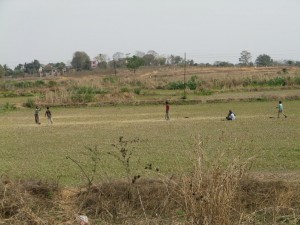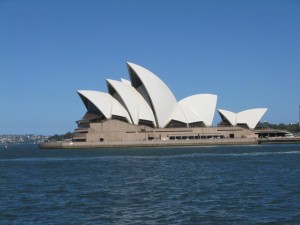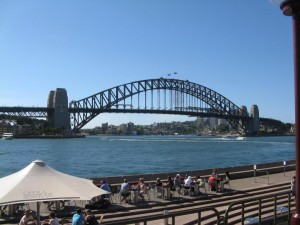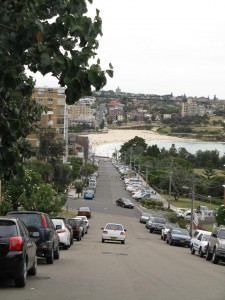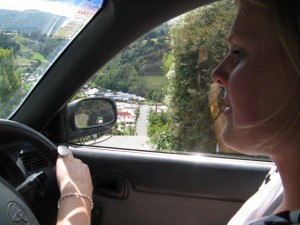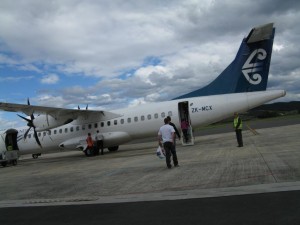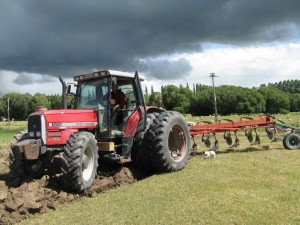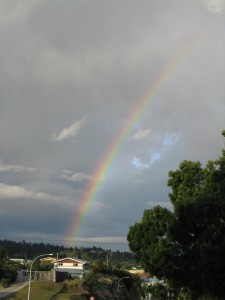We continued our hike along the shore. According to our wet maps and the almost illegible guide book we would have to leave the shore at some point and climb up the mountains a bit to reach an old mining track. We would then have to follow that track to the town of Ouinné.
Ouinné is located approximately in the middle between Thio and Yate – the northern and southern ‘end’ of the Côte Oubliée, the Forgotten Coast. It has no road connection to the outside world and the only means to get there are by boat or aircraft – or per pedes. We didn’t know what we would find there or wether Ouinné was inhabited at all.
The shore was quite narrow, with no beach, and the thickly forrested mountains rose almost directly from the sea. Around noon we were faced by a seemingly unsurmountable obstacle. The heavy rains of the past days had created a wild stream that almost fell down from the rocks above. It was so violent that we didn’t dare cross it. We weren’t so far from the place were we’d have to start climbing up, and in fact it might as well have been the very spot. We decided to follow the stream up and the machete we’d been carrying all the way came in quite handy. After a while of fighting through the undergrowth we couldn’t go any further on our side of the stream and had to cross it. We had come so far that by now it was less wide and less violent. We decided to continue climbing in the stream itself.
The forrest left and right dissappeared and made way for smaller bushes and our stream flew over a kind of flat terrace. We saw it come down from an increasingly steep hillside up ahead. On that platform we found a track going parallel with the shore. It wasn’t the one we’d been looking for, but it was on our map nonetheless! So happy!
We followed the track which wound its way further up. We even crossed our stream again which by now wasn’t much more than a trickle.
The track had originally been built for the Ouinné-based mining activities and used to be wide enough for heavy vehicles. Now it had obviously been out of use for quite a while and was in very bad condition in some places. It was either overgrown, covered in rocks, or had simply eroded away. However it was well managable on foot. At least up to a certain spot where a 10m-wide part of the hillside had just slided down and taken the track with it. All that was left was sheer, almost vertical, slippery rock. No way we could cross it.
The track continued on the other side, turned around in a hair-pin bend and we guessed that we could meet it again some 20 m above our current position. So we decided to try and climb up on the hillside. It looked easy enough – not too steep and with enough opportunities to hold on to.
We started climbing – Emma with the smaller backpack, and myself with the bigger one on the back and the drybag strapped to the chest. We soon realized that we had entirely misjudged the difficulty and danger of the climb. The underground consisted of a mix of rocks and earth, became steeper with every meter we gained in altitude, and was wet, muddy, and slippery on top of all that.
Halfway through we both got stuck, seemingly with no reliable rocks within reach to step onto or hold on to. After a nerve-wrecking while Emma managed to find something for the next steps and first reached a crippled pine tree clinging to the slope, and shortly thereafter set foot on the track above. I was still stuck, mostly due to the drybag being trapped between me and some rocks. I had Emma take a thin rope from her backpack and almost had to force her to climb down to the pine tree again from where she lowered one end of the rope down to me. Somehow, I don’t know how exactly, I managed to free the drybag from under me and attach it to the rope. Alternately pulling and pushing myself up and helping Emma pull the drybag I finally reached the pine tree and then the track.
In hindsight I can safely say: that climb on that slope was the most dangerous and stupid thing I have ever done (to date) and those 30 minutes (or however long it took us) could have easily ended differently.
After a short break Emma pushed forward, desparately wanting to reach Ouinné before nightfall. We followed the track and finally reached the pass from where we could see Ouinné in the distance, then ziggzagged down the hill on the eroded track. It even must have been asphalted years ago, as we found a thin layer of tarmack in some places. Down on the plain we had to cross another violent stream before we emerged on Ouinné’s airstrip.
We reached the town with last light and found it inhabited. We asked the first person we came across for the boss of the place. We found him and without much ado he gave us a ‘studio’ – a kitchenless one-room appartment – for the night. Our neighbours shared their bread and coke with us.


